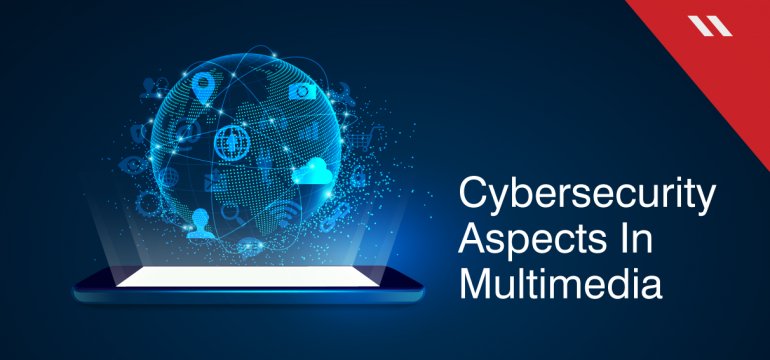The explosion of internet speeds across the globe has led to a rapid increase in high-end streaming technology, wireless sensor networks and wearable Internet of Things (IoT) devices. Multimedia networks generate huge amounts of data flowing through multiple devices in different locations while also raising important questions about data propriety, copyright and protection. Cybersecurity has become an important component of multimedia networks looking to tackle these issues.
The urgency is precipitated by the condition of organizations which operate in this sector. A survey of cybersecurity decision-makers at US media and entertainment firms by Forrester Consulting in September 2018 found that more than half of the surveyed firms had experienced three or more cyber attacks. In April 2015, a cyberattack on renowned French international TV broadcaster TV5 Monde took 12 channels belonging to the broadcaster off the air.
Considering multimedia networks deal with the dissemination of large amounts of content in video, audio, image and other formats, these networks are open to various types of threats which target three major features of these networks:
Confidentiality
Confidentiality is an important feature of data in multimedia networks. Access to confidential data through illegal means or unauthorized channels constitutes a major threat.
Integrity
The integrity of the data contained in multimedia networks is paramount. Alteration of this data through detected or undetected means represents a major breach.
Availability
The end-users of multimedia networks expect the data they seek to be available at all times. Any disruption to this service has both a reputational and a financial consequence.
The exact kinds of threats that multimedia networks face are varied but they definitely include:
Distributed Denial of Service (DDoS) attacks
Multimedia networks are large & distributed and transmit huge amounts of data. Attackers specifically target such networks with Distributed Denial of Service (DDoS) attacks as the repercussions are immediate.
Patching vulnerabilities
Multimedia networks consist of many devices distributed mainly over different continents and countries. Such a large network means it is not always possible to ensure all devices are compliant with the recent security updates, opening up the network to vulnerabilities.
Supply chain attacks
As alluded to in the last point, the multimedia network generally has large supply chains which may not always uphold the same standards of cybersecurity. Any malware in the supply chain may spread to the main network leading to the network finding itself at risk.
Social engineering
Though awareness has increased, multimedia networks often find themselves operated by employees who do not take cybersecurity as seriously or do not understand the consequences of neglecting cybersecurity. Such employees are at high risk of social engineering attacks.
To protect against these threats, enterprises running multimedia networks can consider Seqrite’s Unified Threat Management (UTM) solution which is a complete security package of vital tools, including a UTM firewall and high-grade intrusion detection systems.
Key UTM features which keep networks safe from threats:
- Firewall – Administrators can block traffic between internal and external networks based on compliance policies
- Intrusion Prevention System (IPS) – Network traffic is scrutinized in real-time to forestall a broad range of DoS and DDoS attacks
- Gateway Antivirus – Incoming and outgoing network traffic is scanned at the gateway level
- Web Filtering – Non-business related web traffic can be blocked by administrators with the option of group-based bandwidth management




